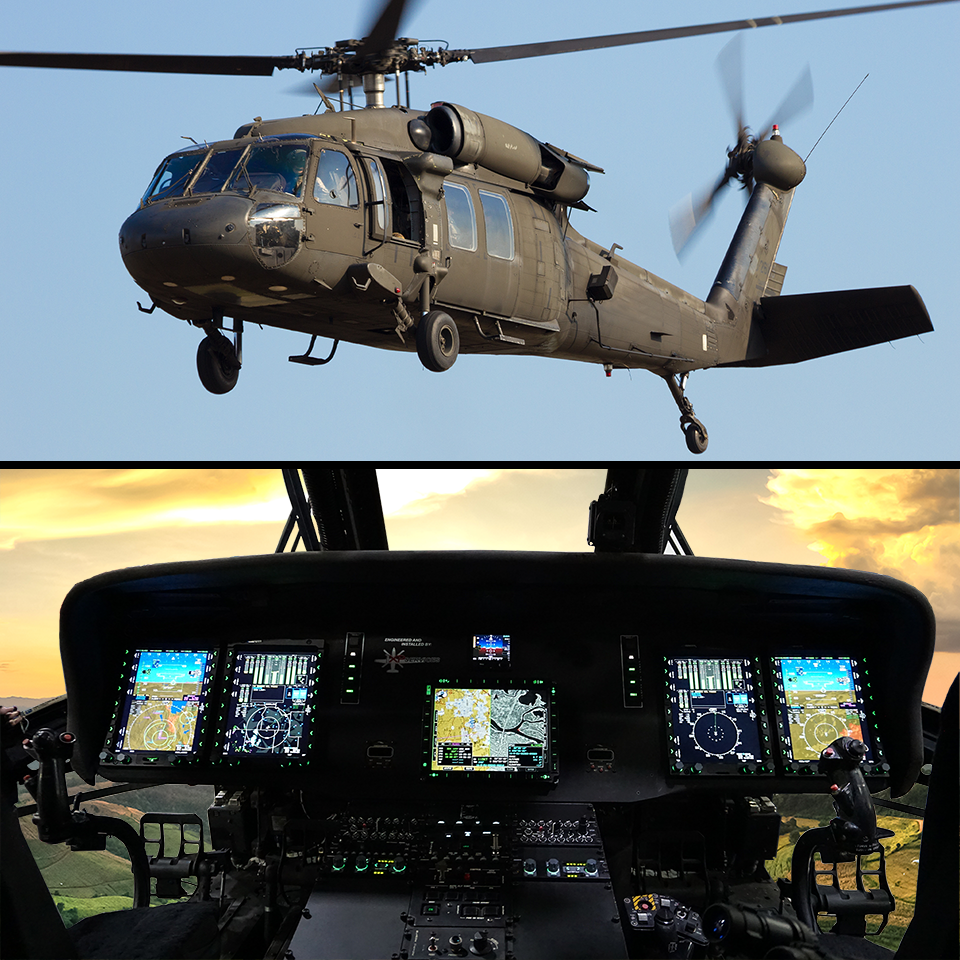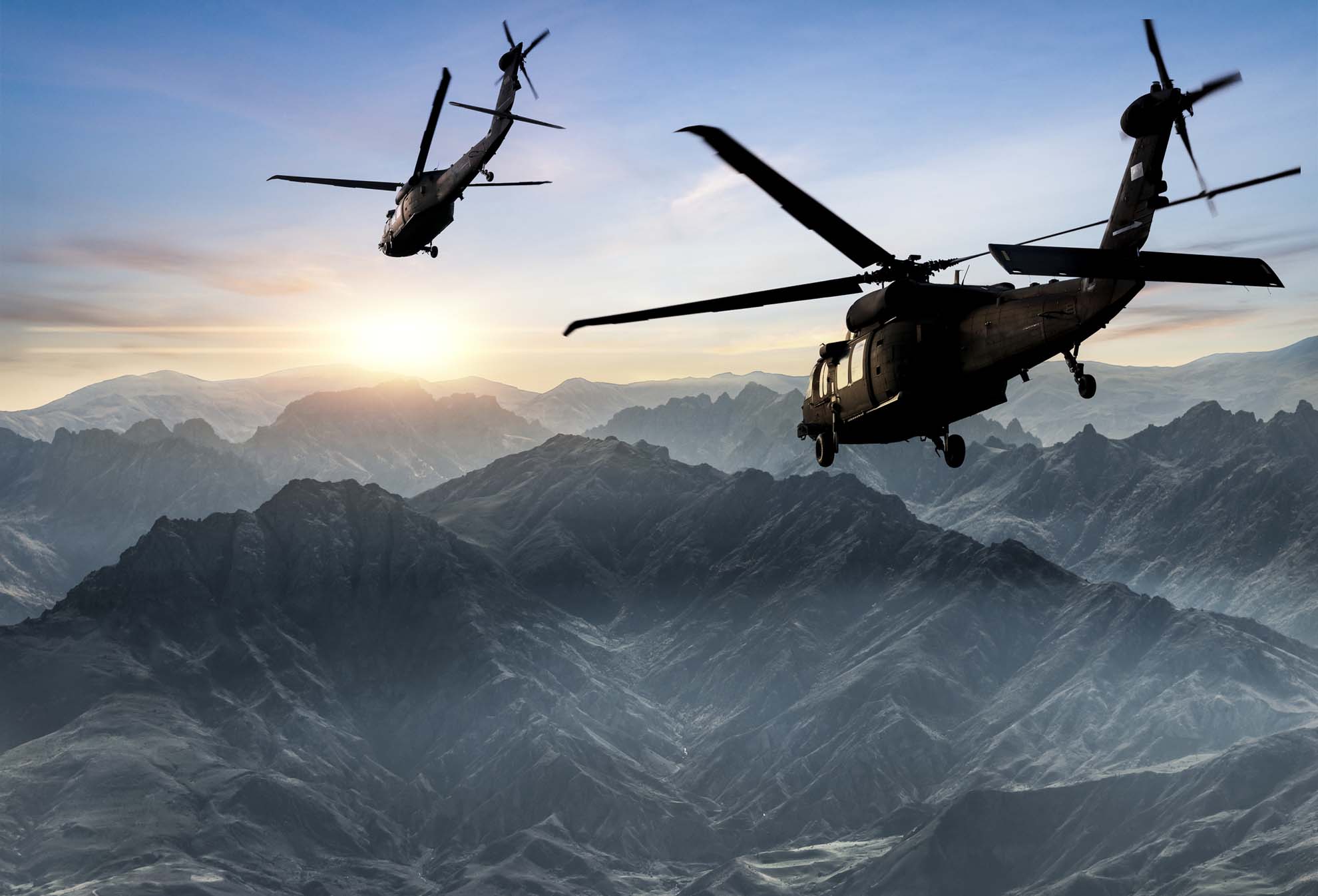UH-60 Blackhawk: Versatility in Fight and Humanitarian Missions
UH-60 Blackhawk: Versatility in Fight and Humanitarian Missions
Blog Article
Find Out About the Adaptability of the UH-60 Blackhawk
The UH-60 Blackhawk is an impressive example of contemporary military engineering, symbolizing adaptability throughout a wide variety of functional contexts. From army transportation to clinical evacuation and reconnaissance goals, its design accommodates numerous roles while emphasizing rapid release and adaptability. The advanced avionics and durable abilities of the Blackhawk not just improve its functional effectiveness in tough settings yet also expand its energy in humanitarian efforts. Comprehending its diverse applications motivates a closer assessment of exactly how this helicopter continues to progress and influence army and private operations alike.
Background of the UH-60 Blackhawk
The UH-60 Blackhawk, a functional energy helicopter, was developed in the late 1970s by Sikorsky Airplane to satisfy the united state Military's need for a contemporary tactical transport helicopter. This effort occurred in action to the limitations observed in the previous generation of helicopters throughout the Vietnam Battle. The U.S. Army sought an airplane that could execute a series of goals, consisting of troop transport, medical emptying, and logistical assistance, while additionally displaying enhanced survivability and performance.
The Blackhawk was made with advanced innovation and engineering, including a twin-engine arrangement, a four-bladed blades system, and a robust airframe. Its initial flight happened in 1974, and it was officially introduced into solution in 1979, quickly ending up being a crucial property for the united state military. The helicopter's flexibility permitted it to be utilized in numerous battle and altruistic procedures, showcasing its performance in varied settings and goals.
Over the years, the UH-60 has actually gone through constant upgrades and modifications, ensuring its importance in contemporary warfare. Its heritage has solidified its standing as a foundation of armed forces air travel, reflecting a commitment to innovation and operational quality.
Key Attributes and Specifications
Regularly admired for its engineering prowess, the UH-60 Blackhawk boasts a variety of essential attributes and specifications that boost its functional capacities. This functional helicopter is powered by two General Electric T700-GE-701C engines, each efficient in producing 1,800 shaft horse power, allowing it to accomplish an optimum cruise speed of about 150 knots.
The airplane's distinct design consists of a four-blade major blades system and a four-blade tail rotor, contributing to superior ability to move and stability. With an optimum departure weight of 22,000 extra pounds, the UH-60 can lug as much as 11 soldiers or equivalent freight. Its sophisticated avionics suite supplies boosted situational recognition and navigation, essential for different mission profiles.
The Blackhawk features a robust airframe built from advanced composite materials, providing increased durability and resistance to small arms fire. UH-60 Blackhawk. In addition, the helicopter is geared up with a digital fly-by-wire control system, enhancing responsiveness and minimizing pilot workload. With a variety of about 600 nautical miles and the ability to run in diverse environments, the UH-60 Blackhawk continues to be a critical property in contemporary army procedures
Military Applications
With its advanced features and specifications, the UH-60 Blackhawk has actually become a cornerstone of armed forces procedures across the world. Designed for flexibility, it fulfills a wide array of duties varying from army transport to clinical evacuation. The helicopter's capacity to operate in diverse settings-- whether in battle zone or tough surfaces-- guarantees it continues to be an important asset for modern military pressures.
The UH-60's durable layout permits the transportation of up to 11 troops, sustaining quick release throughout crucial objectives. Its sophisticated avionics and navigating systems enhance situational recognition, allowing pilots to implement complicated procedures also in damaging weather. Additionally, the helicopter is geared up with defensive systems to secure versus dangers, making certain the safety of employees onboard.

Altruist Missions

Altruistic objectives frequently count on the UH-60 Blackhawk for its unequaled convenience and quick feedback abilities. This multi-role helicopter has actually proven invaluable in various situations, including disaster alleviation, clinical evacuations, and logistics sustain in remote or hard to reach locations - UH-60 Blackhawk. Its ability to transfer personnel and products swiftly enables for timely interventions throughout situations, dramatically improving the efficiency of humanitarian operations
The Blackhawk's sophisticated avionics and robust design enable it to run in tough environments, such as unfavorable climate condition or tough surfaces. Geared up with raising systems and medical discharge abilities, the helicopter can get injured people from hard-to-reach places, making sure timely medical focus. Additionally, its ability to quickly deploy aid materials, including food, water, and vital devices, makes it an important property in large-scale relief initiatives.
Furthermore, the UH-60 Blackhawk's versatility enables numerous arrangements customized to particular mission requirements, whether Recommended Reading it includes delivering emergency -responders or providing crucial sources to damaged populaces. Its functional history in humanitarian goals highlights the aircraft's essential duty in saving lives and easing suffering throughout natural disasters and humanitarian situations, showcasing its enduring commitment to sustaining worldwide alleviation initiatives.
Future of the Blackhawk
The future of the UH-60 Blackhawk shows up encouraging as improvements in innovation and advancing mission requirements shape its ongoing relevance in army and civilian operations. As militaries around the world look for to improve their fleets, the Blackhawk is going through upgrades that improve its abilities, consisting of improved avionics, advanced interaction systems, and boosted payload abilities.
The combination of unmanned systems and expert system is positioned to change procedures. Future variations may incorporate self-governing flight abilities, enabling for enhanced operational adaptability and minimized danger to workers during high-threat objectives. Furthermore, hybrid-electric propulsion systems are being explored to enhance fuel efficiency and minimize the environmental impact of military procedures.
International collaborations and export opportunities are additionally increasing the Blackhawk's worldwide impact. As countries purchase updating their air wheelchair abilities, the Blackhawk's flexibility makes it a desirable selection for numerous functions, from army transport to medical pop over to this web-site discharge and search-and-rescue operations.
Conclusion
The UH-60 Blackhawk exemplifies versatility in army aviation, properly fulfilling duties ranging from army transportation to medical discharge and reconnaissance. As operational needs progress, the ongoing development and assimilation of the Blackhawk will certainly ensure its relevance and effectiveness in resolving future challenges in both military and noncombatant contexts.

With its advanced attributes and specs, the UH-60 Blackhawk has actually come to be a keystone of military operations throughout the world. As military methods evolve, the UH-60 Blackhawk proceeds to play a crucial function in improving operational effectiveness and making certain goal success across the movie theaters of interaction.
Humanitarian objectives commonly rely on the UH-60 Blackhawk for its unrivaled convenience and rapid feedback capacities. UH-60 Blackhawk.The UH-60 Blackhawk exhibits versatility in military air travel, look at this website successfully meeting functions ranging from army transportation to clinical discharge and reconnaissance
Report this page